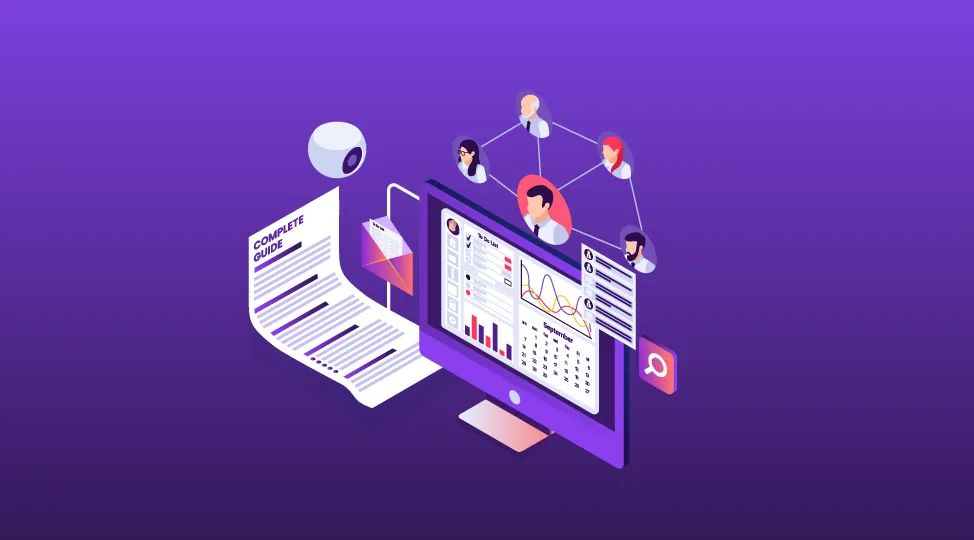Business

5 min

This blog guides businesses through AI implementation with a step-by-step roadmap, covering benefits, costs, risks, and industry-specific compliance. It helps leaders decide whether to build, buy, or partner with AI consulting firms—ensuring scalability, efficiency, and long-term success.

By Sannidhya Sharma
20 Aug, 2025
Artificial Intelligence is no longer considered to be a technology in its experimental phase. For CTOs and other senior leaders, the challenge is no longer about if AI should be implemented, but how to do it effectively within their organization.
On the contrary, even the idea of implementing AI might feel like a difficult task. Questions such as “what does it mean?”, “can my business implement AI?”, “how much would it cost?”, “how much time would it take?” must definitely bother you. But however troubling might it seem, the correct AI implementation consultant would certainly put your business in an advantageous position.
We’ve prepared a comprehensive AI implementation roadmap along with answering several questions about the process. You will understand what you need to do, how you need to implement AI, and what factors you need to be careful of.
The apprehension or skepticism around artificial intelligence implementation plan can be categorised in two scenarios:
Either your business/enterprise is operating and scaling really well and the need to implement AI was never felt, or,
Your business is fairly new and you are worried about what to implement, how to implement AI in business, and whether it would actually profit your business or not.
Even if you have never felt the urgent need for AI implementation in business, here’s how it can still add value:
Alternatively, if you’re unsure about what to implement and whether it would benefit you, here’s how it definitely would:
No matter what juncture your business is at, AI can always help you move towards the right direction and help stay relevant and floating for years.
Before adopting an AI implementation roadmap, make sure your business is AI-ready. It’s not only about buying the right tools but having a solid foundation too. Preparing this groundwork ensures AI delivers lasting business value.
Here are some prerequisites to have in place before going ahead:
With these fundamentals covered, your business should be ready to welcome AI in its entirety.
This AI implementation roadmap covers everything in detail; starting from defining the problems your business faces down to deploying and optimizing it. Follow it step-by-step, and you’ll reach your AI goals faster, with fewer surprises along the way.
Adopting AI without strategic intent results in underutilization and poor ROI. You must have a clear vision of why your organization needs AI, and what results it is likely to deliver before you start looking at tools or vendors.
Suppose you want to apply AI in supply chain management, start by doing these things:
List down the exact problems your business is facing. Is it that your support team spends too much time answering repetitive queries? Is forecasting sales a game of guesses? Or is your production line losing hours to errors that can be easily avoided?
If you can’t define the problem, you can’t measure AI’s success later. Your goal should be to find use cases where AI directly connects to measurable business outcomes like reduced costs, higher revenue, faster processes, or happier customers.
Here, you’re essentially creating a problem statement and pairing it with KPIs (Key Performance Indicators). For example:
a) Reduce customer support response time by 40% in 6 months using an AI chatbot.
b) Increase inventory forecast accuracy by 15% using predictive analytics.
Without this clarity, any AI project risks becoming a gimmick rather than a business asset.
After clarifying the business problem, the next building block is the quality of your information. The workings of any AI tool, especially for AI in healthcare apps, are only as reliable as the data it receives. Skipping in-depth review here can destroy even the most expertly designed projects.
Gather every relevant source internally or externally such as sales histories, order systems, logistics logs, operational notes. Each must be thoroughly examined:
Avoiding these checks plants hidden risks. Once digital models are built on flawed information, corrections grow much more time-consuming and expensive.
Pairing auto-scan routines with expert review is the soundest practice. Many now run scheduled data check cycles before new projects begin. If you don’t validate sources, outcomes quickly lose trust for workers and clients alike.
Next comes forming a workforce that crosses skill sets: deep technical know-how coupled with business familiarity.
Ideally, your team should include:
Specialized matters like AI language models, language analysis or regulatory planning usually require an expert AI consultant for their wider perspective. These outside experts often fill tough gaps and pass hard-won lessons to internal employees. This matters because lack of skills stalls progress, while blind spots in business context make fragile tools.
Furthermore, here is also what you should do:
A group mixing tech minds and business sense steers the mission toward dependable, repeatable gains.
One of the most important decisions to make during the implementation of AI is the choice of tools and platforms. Its choices cut across cloud providers, open-source frameworks, and enterprise AI platforms:
You can also explore generative AI development services for solutions like chatbots, automated content creation, or design optimization tools. The correct decision should rely on your team expertise, compliance requirements, budget, and whether you need speed, scalability, or high customization.
Begin with a pilot project; a controlled test on your greatest problem. An all-at-once adoption of AI is riskier, but a pilot provides you with evidence first before scaling.
For instance, you can pick one use case from Step 1 that can be highly impactful but is not as risky. The purpose of this step is to test the feasibility and functionality of the pilot project, not to make money out of it. It lets you gather feedback, run tests, and make it more accurate before launching it later.
Basically, you should:
In addition to these main steps, a good pilot must also:
Once you’re satisfied with your pilot project, it is now time to deploy and integrate it with your existing systems. This integration can be both delicate and complex, which is why many organizations rely on professional AI integration services to ensure a smooth transition. Carefully draw the links. Each feature or panel must work with ageing technologies, record storage, and core systems. Split deployment phases, test thoroughly (in both test and active settings), and map out the handover details.
Team feedback counts as much as technical fit. Staff used to former habits may resist. Gather their firsthand input, offer guided practice, and swap designs based on direct feedback to drive smoother takeup and less resistance.
Ideally, here is what you should cover:
For smoother rollouts, many companies turn to AI ML development services that specialize in large-scale data processing, training, and deployment.
Top organizations in 2025 and AI consulting companies view every system as unfinished, a process of constant tracking, revisiting, and upgrading.
Build routines to monitor: output accuracy, user experience, cost changes. Even well-accepted rollouts can slowly develop unseen issues, data drift, process stalls, or missteps in daily use.
Here’s what you should look after:
Artificial intelligence is not a universal tool. Different industries have different rules of compliance, security, and barriers to adoption. Although AI can make efficiency and innovation possible in various sectors, the risks associated with privacy, safety, and trust are vastly different. Whether it is patient information in the healthcare sector or financial transactions through AI in fintech or workplace safety in manufacturing and supply chains, the route to responsible adoption of AI is driven by regulatory and operational realities of every industry.
The potential of AI in healthcare is predictive diagnostics, patient-specific treatment plans, and efficiency. However, when sensitive protected health information (PHI) is involved, compliance and trust are not up for negotiation.
For example, IBM Watson Health has revolutionized cancer treatment by analyzing medical data to recommend tailored treatment plans.
Another high-stakes sector where the use of AI is quickly gaining momentum is the financial sector. Whether it is the detection of fraud or automated underwriting, AI enables companies to stay ahead of the threats and provide a smooth customer experience. However, the dangers in this case are security, trust and compliance.
AI improves predictive maintenance, demand forecast, and real-time optimization of logistics. However, adoption is accompanied by safety and compliance risks.
AI is quickly becoming an essential tool in retailers to personalize, manage inventory and fraud detection but consumer trust and data privacy are paramount.
Artificial intelligence assists in streamlining energy grids, predictive demand, and speeding the shift to renewables. Nonetheless, the industry is very sensitive to national security and environmental policies.
The implementation of AI based on sector-specific standards will enable organizations to maximize the potential of AI and maintain security, compliance, and trust, and that transformation does not come at the expense of accountability.
The cost of AI implementation is very different according to the size of the business, the complexity of the project and the resources needed to implement and maintain. Startups might only require basic AI models with minimal infrastructure, whereas enterprises typically invest in large-scale, custom AI ecosystems that may demand dedicated teams and high-performance computing. Below is a breakdown of AI implementation costs across startups, mid-sized businesses, and enterprises, with typical ranges and component-level estimates
| Business Size | Total First-Year Cost Range | Upfront Investments | Data Preparation | Talent & Training | Integration & Deployment |
|---|---|---|---|---|---|
| Startups | $10,000 – $500,000 | $10K–$50K (basic tools, licenses, cloud infra) | $5K–$30K (dataset prep, labeling) | $10K–$50K (outsourced or small AI team) | $15K–$70K (pilot integrations, APIs) |
| Mid-Sized Businesses | $100,000 – $500,000+ | $50K–$150K (custom models, infra upgrades) | $20K–$100K (cleaning & structuring) | $50K–$200K (engineers, consultants, training) | $50K–$125K (system integrations, APIs, testing) |
| Enterprises | $500,000 – $5M+ | $250K–$1M (enterprise infra, licenses, HPC) | $100K–$500K (multi-source consolidation, labeling) | $1M–$2M/year (dedicated AI teams, reskilling) | $100K–$500K (legacy system integration, phased rollout) |
While the exact figures will vary by use case, these estimates highlight how AI shifts from being a relatively lean investment for startups to a highly strategic, resource-intensive commitment for enterprises.
One of the biggest decisions for CTOs and technology leaders is choosing the right path for AI implementation: Should you build it in-house, buy an off-the-shelf solution, or partner with AI consulting firms? Both methods have costs, control, scalability, and long term flexibility trade-offs.
1. Build In-House
The internal development of AI solutions is the most controllable and customizable. Your team can customize algorithms to fit your specific workflows, guarantee data governance and intellectual property. Nonetheless, this direction is resource-intensive; it involves attracting hard-to-find AI talent, investing in infrastructure, and making a long-term research and maintenance commitment.
2. Buy Off-the-Shelf
The quickest path to adoption can be by purchasing pre-built AI tools. Vendors sell plug-and-play products to do such things as customer service automation, fraud detection, or predictive analytics. This increases the speed of deployment but reduces customization. There is also the risk of integration problems and vendor lock-in, particularly when your use case changes to be outside of what the tool supports.
3. Collaborate with AI Consultancy Firms
The collaboration with AI consulting firms will help you achieve the balance between speed and customization. Senior consultants have tested models, industry knowledge, and have the capacity to scale solutions aligned with your business requirements. Not only do they explore new systems like Agentic AI, but they are also able to assist in determining feasibility, minimizing implementation risks, and complying with regulations in a specific sector (e.g., HIPAA in healthcare, PCI DSS in fintech).
Making the Correct Decision:
Here are some challenges you might face:
The takeaway is that AI success isn’t about the tech, it’s about solving these people, process, and data headaches first.
In this ever-changing landscape of the tech industry, adopting artificial intelligence has become a thing of necessity. There are several benefits of AI in business that you cannot overlook. Implementing AI can be challenging, lengthy, confusing, resource-intensive, risky, but it still remains a potential transformative element that your business will have to have.
Thus, the sooner you prepare for the shift, the sooner you can position yourself as an industry leader.
1. How long does it take to implement AI in a mid-sized business?
Timelines vary based on complexity, but for mid-market teams, pilots typically take 3–6 months, while full-scale implementations can extend to 9–18 months. Factors like data readiness, legacy integration, and governance requirements significantly influence the timeline.
2. How much does AI cost to maintain after launch?
Post-launch maintenance can cost 15–25% of the initial implementation budget per year. This covers cloud usage, model retraining, compliance audits, monitoring tools, and retaining AI talent. Costs also scale with the number of business functions AI supports.
3. What changes for AI in healthcare (HIPAA/PHI)?
Healthcare AI must comply with HIPAA rules around Protected Health Information (PHI). This means stricter encryption, audit logging, and role-based access control. In addition, human-in-the-loop oversight is critical to prevent algorithmic bias in clinical decision support systems.
4. What changes for AI in fintech (SOC 2/PCI DSS/AML)?
Fintech AI requires adherence to SOC 2 for security and availability, PCI DSS for cardholder data protection, and AML/KYC obligations for fraud and risk monitoring. Beyond compliance, model risk governance ensures predictive models don’t introduce regulatory liabilities.
5. Should we build AI in-house, buy off-the-shelf, or partner with AI consulting firms?
6. What is the biggest challenge companies face when scaling AI?
Most organizations struggle not with algorithms but with data quality, governance, and change management. Ensuring clean, compliant, and accessible data often takes longer than model development itself.
Generative AI Tech Stacks: Choosing the Right Tools for Scalable AI Development
By Dhruv Joshi
5 min read
Choosing Best Tech Stack for Web App Development: Performance, Cost, and Scalability
By Dhruv Joshi
5 min read
Top 9 Tech Stacks for Scalable Web Application Development
By Dhruv Joshi
5 min read
Generative AI Implementation Strategy: From Concept to Deployment (Step-by-Step Guide)
By Sannidhya Sharma
5 min read

Business

5 min
Plan hr software development the practical way: must-have HRMS features, event-driven architecture, integrations, security controls, and a clear build roadmap. Use cost ranges, effort tables, and partner checklists to choose reliable hr software development companies. See persona-based workflows, a build-vs-buy matrix, and budget levers to launch an HRMS that reduces errors, speeds onboarding, and delivers audit-ready analytics.


Business

5 min
Learn how pharmacy management software development streamlines dispensing, inventory, billing, and patient engagement. This comprehensive guide covers software types, core modules, tech stack, step-by-step process, must-have 2026 features, costs, and tips for hospitals and independent pharmacies. Build secure, interoperable, cloud-ready pharmacy management software that reduces errors and improves care outcomes.


Business

5 min
Telemedicine app development is transforming healthcare by enabling secure, remote care through video, chat, and monitoring tools. Telemedicine apps support urgent care, chronic management, and mental health, while key features include e-prescriptions, EHR integration, and secure payments. Choosing the right telemedicine app development services partner requires proven healthcare expertise, HIPAA/GDPR compliance, scalable cloud architecture, transparent pricing, and strong post-launch support.


Feeling lost!! Book a slot and get answers to all your industry-relevant doubts